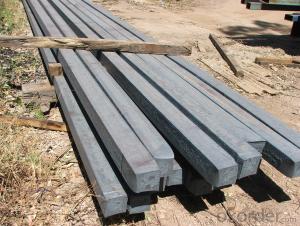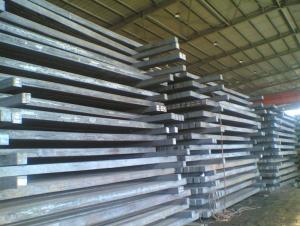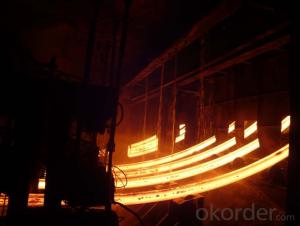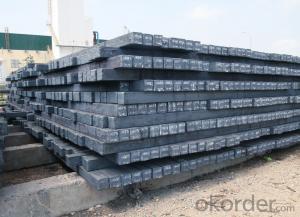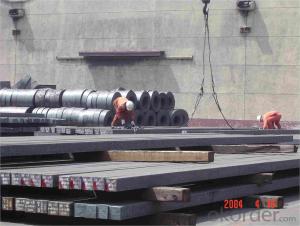Q235/3SP 165MM Blast Furnace Hot Rolled Steel Billet
- Loading Port:
- Tianjin
- Payment Terms:
- TT OR LC
- Min Order Qty:
- 2000 m.t.
- Supply Capability:
- 30000 m.t./month
OKorder Service Pledge
OKorder Financial Service
You Might Also Like
Description of Q235/3SP 165MM Blast Furnace Hot Rolled Steel Billet
Our hot dip galvanised steels consist of a steel substrate with a metallic zinc coating applied by means of a continuous hot dip galvanising process. Metallic zinc coatings are available in steel grades ranging from steel for bending and deep drawing applications, to structural steels and high yield strength steels.
A glossy surface finish obtained under specific skin-pass conditions (either non-skin-passed or skin- passed with smooth cylinders to obtain low roughness) can be provided if required at time of enquiry.
Advantage of Q235/3SP 165MM Blast Furnace Hot Rolled Steel Billet
Uncoated CR steel sheet With the features of in line with the international highest standards in demension and shape, excellent surface finish and properties, the products are mainly used in home appliance and automobile industries.
Galvanized steel sheet(include HDG and EG)
With the features of good corrosion resistance, the products are mainly used in automobile, home appliance, electronics, building and machinery manufacture industries, etc.
Precoated steel sheet With the features of enviromental protection and good processablility, long lasting surface durability, rich in colors, the products are maily used in building, home appliance and furniture industries, etc.
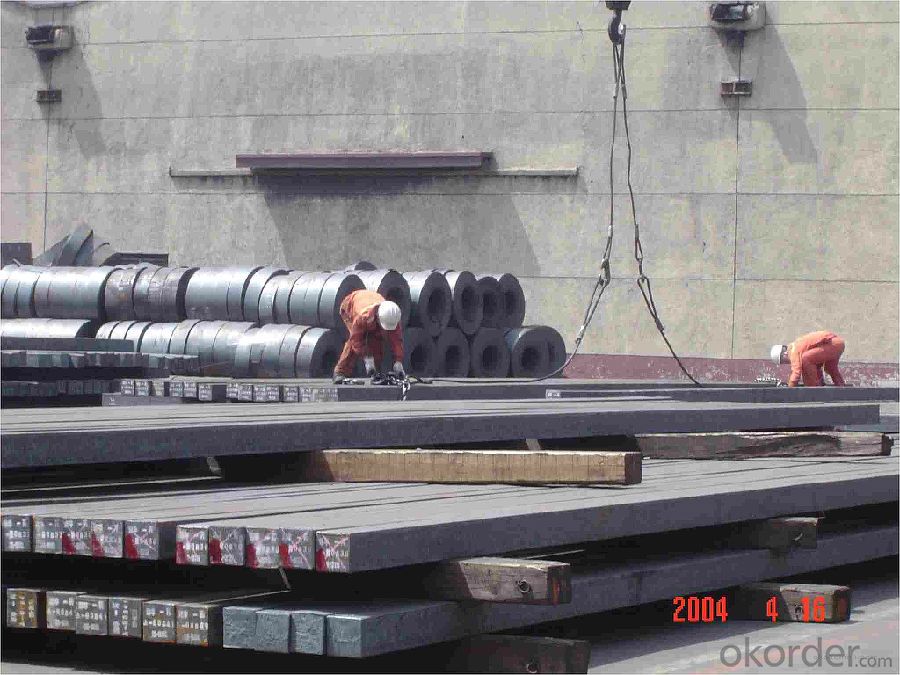
Applications of Q235/3SP 165MM Blast Furnace Hot Rolled Steel Billet
Our hot dip galvanised steels can be used in a very wide range of applications for industrial markets, both indoors and outdoors. Some of the most common applications are:
Building: wide sections for roofing and cladding, doors, door frames, metallic ceilings, partitions, structural members etc
Domestic appliances: all appliances for this sector (both white and brown goods) are manufactured with hot dip galvanised steels
Miscellaneous: electrical cabinets, aeraulic components, air conditioners, road signs etc
Zinc hot dip galvanised steel is suitable for contact with foodstuffs under certain conditions, as specified in European directive 89/109/EEC and French standard NF A 36-712-1. Please contact us for further information on this subject.
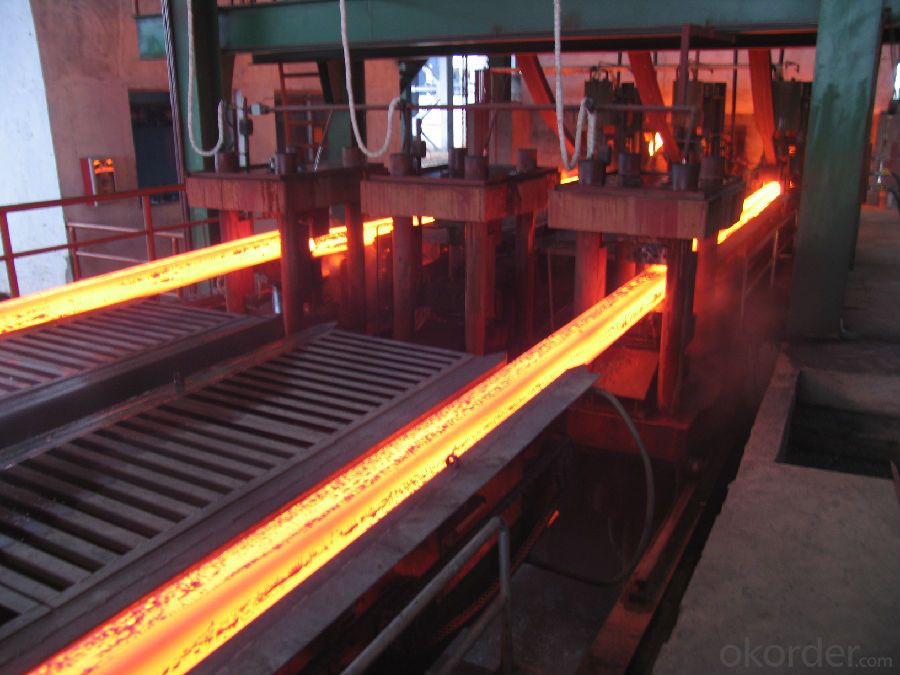
Specifications of Q235/3SP 165MM Blast Furnace Hot Rolled Steel Billet
Quality | Q/BQB 440-2003 | JIS G3312-1994 JIS G3321 | EN 10326-2004 | ASTM A653-02a |
EN 10327-2004 | (BASE PLATE) | |||
(BASE PLATE) | ||||
Commercial Steel | DC51D | SGCC SGLCC | DX51D+Z DX51D+AZ | CS Type A/B/C |
Forming Steel | St01,St02,St03 | SGCD1 SGLCD1 | FS Type A, Type B | |
Drawing | DC52D /DC53D | - | DX52D+Z DX52D+AZ | DDS TYPE A/C |
Steel | DX53D+Z DX53D+AZ | |||
Structural | S280GD (StE28) | SGC400 SGLC400 | S280D+Z DX54D+AZ | SS275 |
Steel | S350GD (StE34) | SGC440 SGLC440 | S350D+Z S350D+AZ | SS340 Class1 |
FAQ of Q235/3SP 165MM Blast Furnace Hot Rolled Steel Billet
We have organized several common questions for our clients,may help you sincerely:
1. How Can I Visit There?
Our company is located in Tianjin City, China, near Beijing. You can fly to Tianjin Airport Directly. All our clients, from home or aboard, are warmly welcome to visit us!
2. How Can I Get Some Sample?
We are honored to offer you sample.
3. Why choose CNBM?
Our delivery time about 15-20days for standard sizes, if you have other requirements like hardness, quanity and width ,it is about 20-40days. But don't worry we also try our best for the delivery time ,because time longer and our cost is higher.
- Q:What are the main properties of steel billets?
- Steel billets serve as the initial material for various steel products and possess several important properties that make them suitable for further shaping and processing. To begin with, steel billets demonstrate a high level of strength and durability. This is primarily attributed to the composition of steel, which consists mainly of iron with small amounts of carbon and other elements. This composition provides steel billets with exceptional mechanical properties, including high tensile strength and resistance to deformation. Moreover, steel billets exhibit favorable heat transfer properties. Steel is renowned for its efficient heat conductivity, making it an ideal material for applications requiring thermal conductivity, such as the production of automotive parts or construction materials. Furthermore, steel billets possess excellent machinability. Machinability refers to the ease with which a material can be shaped or formed using various machining processes. Steel billets can be easily cut, drilled, and shaped into desired forms, enabling efficient processing and fabrication. Additionally, steel billets display superb weldability. Steel is known for its compatibility with welding processes, enabling the joining of different steel components or the repair of damaged steel structures. This property is crucial in numerous industries, including construction, automotive, and shipbuilding. Lastly, steel billets have a high level of recyclability. Steel is one of the most widely recycled materials globally, with a significant portion of steel production derived from recycled steel. This environmentally friendly aspect makes steel billets an excellent choice as they can be recycled and repurposed multiple times without losing their properties. In conclusion, steel billets possess high strength and durability, favorable heat transfer properties, excellent machinability and weldability, and a high level of recyclability. These properties establish steel billets as a versatile and extensively used material in various industries, spanning from construction and manufacturing to automotive and aerospace.
- Q:How do steel billets contribute to the overall durability of a product?
- Steel billets play a crucial role in elevating the overall durability of various products, and their contribution cannot be overstated. These semi-finished steel products serve as raw material for further processing in industries such as construction, automotive, and manufacturing. A key factor in the enhanced durability provided by steel billets is their superior strength and toughness. Steel is renowned for its exceptional mechanical properties, including high tensile strength and resistance to deformation, making it an optimal choice for applications that require durability. By utilizing steel billets as the initial material, manufacturers can guarantee that the final product will possess the necessary strength to endure heavy loads, impacts, and external forces. Additionally, steel billets exhibit outstanding corrosion resistance. With proper processing and treatment, steel can withstand rust and other forms of corrosion caused by moisture, chemicals, or environmental factors. This corrosion resistance significantly enhances the durability of the end product by preventing degradation and extending its lifespan. Another advantage of employing steel billets lies in their versatility for customization. Manufacturers can shape and form the billets into various sizes and dimensions to meet the specific requirements of the product. This flexibility enables the production of components that fit together perfectly, reducing the risk of weak points or vulnerabilities in the overall structure. Furthermore, steel's malleability and ductility allow for easy molding and welding, further enhancing the overall strength and durability of the final product. Furthermore, steel billets undergo stringent quality control measures during the manufacturing process. These measures ensure that the billets meet rigorous industry standards and specifications, guaranteeing their reliability and consistency. The utilization of high-quality steel billets, in turn, contributes to the overall durability of the product by providing a sturdy and dependable foundation. In conclusion, steel billets play a pivotal role in enhancing the overall durability of products. Their exceptional strength, corrosion resistance, versatility, and high-quality attributes make them an optimal choice for industries that prioritize durability. By utilizing steel billets as the raw material, manufacturers can create products capable of withstanding demanding conditions, ensuring longevity and customer satisfaction.
- Q:What is the role of steel billets in the construction of bridges and tunnels?
- Steel billets play a crucial role in the construction of bridges and tunnels as they serve as the raw material for manufacturing various structural elements. These billets are heated and shaped into beams, girders, and columns that provide the necessary strength and support required for these infrastructure projects. By using steel billets, engineers can ensure the durability, load-bearing capacity, and overall structural integrity of bridges and tunnels, making them safer and more reliable for transportation and other purposes.
- Q:What are the different types of steel billet cutting processes?
- Various industries utilize several different steel billet cutting processes. Among the most frequently employed methods are: 1. Shearing: This technique entails utilizing a shear machine to cut the steel billet into the desired shape. Shearing is typically chosen for cutting straight lines and is a cost-effective option for smaller billets. 2. Sawing: Another commonly used approach is sawing, which involves utilizing a circular or band saw to cut through the billet. Sawing is suitable for cutting both straight and curved lines, making it more versatile than shearing. 3. Flame cutting: Also known as oxy-fuel cutting, flame cutting involves using a combination of oxygen and a fuel gas (such as acetylene) to heat the steel to its ignition temperature. A high-pressure stream of oxygen is then directed onto the heated area, causing the steel to oxidize and melt away. This process is frequently employed for cutting thicker steel billets. 4. Plasma cutting: Plasma cutting employs a plasma torch to cut through the steel billet. The torch generates a high-temperature plasma arc that melts the metal, while a high-velocity gas stream blows away the molten metal. Plasma cutting is often selected for cutting through thick steel billets or for creating intricate shapes. 5. Waterjet cutting: Waterjet cutting relies on a high-pressure jet of water mixed with an abrasive material (such as garnet) to cut through the steel billet. The abrasive particles in the waterjet erode the steel, allowing for precise and clean cuts. Waterjet cutting is commonly used for cutting complex shapes or materials that are heat-sensitive. These examples represent just a fraction of the available steel billet cutting processes. The choice of method depends on factors such as billet size, desired shape, precision requirements, and available budget.
- Q:How are steel billets used in the production of marine parts?
- Steel billets serve as a vital element in the manufacturing process of marine parts. These semi-finished steel products act as the raw material for shaping and forming a variety of marine components. To commence, steel billets undergo a procedure known as hot rolling. This involves subjecting them to high temperatures and passing them through rolling mills to attain different shapes and sizes. By undergoing hot rolling, the steel's grain structure is refined, thereby enhancing its mechanical properties and rendering it suitable for marine applications. Once the desired shape and size are achieved, these billets are further processed using various techniques such as forging, machining, and welding to create specific marine parts. Propeller shafts, rudder stocks, hull frames, and bulkheads are examples of marine components produced using steel billets. The exceptional strength and durability of steel make it an excellent choice for manufacturing marine parts, as it can withstand the harsh conditions of saltwater, extreme temperatures, and heavy loads. Moreover, steel billets can be easily customized to meet specific design requirements, ensuring the production of precise and dependable marine parts. Additionally, steel billets play a crucial role in the repair and maintenance of marine vessels. When existing components need replacement, steel billets can be shaped and machined to match the exact specifications of the original parts. This guarantees compatibility and seamless integration, facilitating efficient repairs and ensuring the uninterrupted operation of marine vessels. In conclusion, steel billets are indispensable in the production of marine parts as they provide the necessary raw material for shaping and forming various components. The combination of high strength, durability, and customization capabilities makes steel billets an ideal choice for marine applications, ensuring the reliability and performance of marine vessels.
- Q:What is the typical surface finish of a steel billet?
- The typical surface finish of a steel billet can vary depending on the specific application and processing method. However, in general, steel billets are commonly produced with a surface finish that is relatively rough and may exhibit some imperfections such as scale, oxide layers, or minor surface irregularities. This is primarily due to the manufacturing process, which involves hot rolling or casting of the steel billet. Hot rolling is a common method used to produce steel billets. During this process, the steel is heated to high temperatures and passed through a series of rollers to shape it into the desired dimensions. This high-temperature process can result in the formation of scale or oxide layers on the surface of the billet. These layers can give the steel a rough and textured appearance. Similarly, steel billets produced through casting methods, such as continuous casting or ingot casting, may also exhibit a rough surface finish. In these processes, the molten steel is solidified in molds or ingot molds, which can result in the formation of surface imperfections such as surface cracks, pits, or uneven surfaces. However, it is important to note that the surface finish of steel billets can be improved through additional processes such as descaling, shot blasting, or grinding. These processes can help remove the scale, oxide layers, or other surface imperfections, resulting in a smoother and more uniform surface finish. Additionally, some steel billets intended for specific applications, such as precision machining or forging, may undergo additional surface treatments to achieve a desired finish, such as polishing or coating. Overall, the typical surface finish of a steel billet is relatively rough and may exhibit scale, oxide layers, or minor surface irregularities. However, various additional processes can be applied to improve the surface finish according to specific requirements and applications.
- Q:What are the main factors affecting the fatigue strength of steel billets?
- The main factors affecting the fatigue strength of steel billets include the material composition and quality, the presence of surface defects or imperfections, the applied stress levels, the frequency or rate of the applied cyclic loading, and the temperature conditions during the fatigue process.
- Q:What is the role of steel billets in the manufacturing of conveyor belts?
- Steel billets play a crucial role in the manufacturing of conveyor belts. These billets, which are semi-finished products made from molten steel, are the starting point for the production process. Once the steel billets are obtained, they undergo a series of manufacturing steps to transform them into the various components of a conveyor belt. Firstly, the steel billets are heated and then rolled into thin sheets or strips, depending on the desired thickness of the conveyor belt. These sheets are then further processed to create the core structure of the belt. The core structure provides the necessary strength and durability to withstand the demanding conditions of conveyor belt applications. Steel billets are also used to produce the metal reinforcements within the conveyor belt. These reinforcements, usually in the form of steel cords or steel wires, are embedded within the belt to enhance its tensile strength. They prevent the belt from stretching or breaking under heavy loads, ensuring its longevity and reliability. Furthermore, steel billets are utilized to manufacture the belt's pulley system. Conveyor belts rely on pulleys to facilitate the movement of materials along the belt. The pulleys are typically made from solid steel billets that are machined and designed to smoothly guide the belt while maintaining proper tension. In summary, steel billets are vital in the manufacturing of conveyor belts as they serve as the foundation for creating the core structure, reinforcements, and pulleys. Their strength and versatility make them an ideal material for producing conveyor belts that can withstand the rigors of industrial applications, ensuring efficient and reliable material handling processes.
- Q:What are the potential applications of steel billets in the transportation sector?
- Due to their strength, durability, and versatility, steel billets offer a wide range of potential applications in the transportation sector. One primary use is in the manufacturing of various vehicle components, such as engine parts, suspension systems, axles, and other critical parts that require high strength and resistance to wear and tear. Moreover, steel billets can be utilized in the construction of railway tracks, bridges, and tunnels. With its high tensile strength, steel is an ideal material for infrastructure projects as it can withstand heavy loads and provide long-lasting performance. It is also suitable for manufacturing shipbuilding components like hulls, propellers, and deck structures, offering excellent corrosion resistance and structural integrity in marine environments. Additionally, steel billets find use in the production of transportation equipment like trailers, trucks, and buses. Its strength and durability make it an ideal material for constructing the chassis and frames of these vehicles, ensuring their safety and longevity. In the automotive industry, steel billets are commonly used for producing car bodies and frames. The lightweight yet robust characteristics of steel make it a preferred choice for enhancing fuel efficiency and crashworthiness in vehicles. Furthermore, manufacturers can shape steel billets into intricate designs, allowing them to create aesthetically pleasing and aerodynamic vehicle structures. In conclusion, the strength, durability, and versatility of steel billets make them essential in the transportation sector. They are used in various applications, ranging from vehicle components to infrastructure projects. By ensuring safety, reliability, and longevity, steel billets play a vital role in the industry.
- Q:How are steel billets used in the production of railway tracks?
- Steel billets are the raw materials used in the production of railway tracks. They are heated, shaped, and rolled to form long, flat bars known as rails. These rails are then laid on the trackbed, forming the foundation for the tracks on which trains run.
1. Manufacturer Overview |
|
|---|---|
| Location | |
| Year Established | |
| Annual Output Value | |
| Main Markets | |
| Company Certifications | |
2. Manufacturer Certificates |
|
|---|---|
| a) Certification Name | |
| Range | |
| Reference | |
| Validity Period | |
3. Manufacturer Capability |
|
|---|---|
| a)Trade Capacity | |
| Nearest Port | |
| Export Percentage | |
| No.of Employees in Trade Department | |
| Language Spoken: | |
| b)Factory Information | |
| Factory Size: | |
| No. of Production Lines | |
| Contract Manufacturing | |
| Product Price Range | |
Send your message to us
Q235/3SP 165MM Blast Furnace Hot Rolled Steel Billet
- Loading Port:
- Tianjin
- Payment Terms:
- TT OR LC
- Min Order Qty:
- 2000 m.t.
- Supply Capability:
- 30000 m.t./month
OKorder Service Pledge
OKorder Financial Service
Similar products
New products
Hot products
Related keywords

